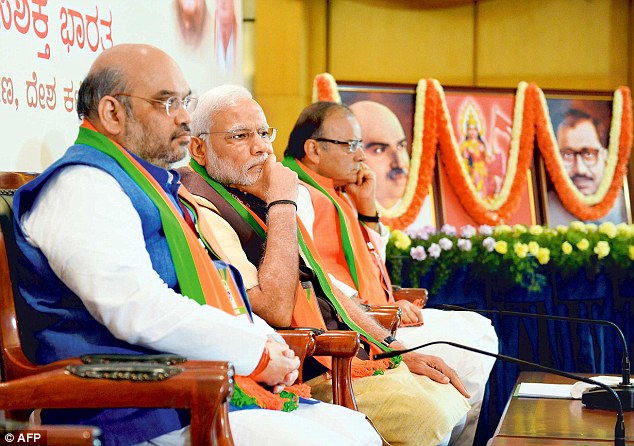With the term of President Pranab Mukherjee getting over on 24th July, parties both at centre and states have started gearing up and molding a common choice for the new president of India. Centre with its allies on one side and united opposition on other, the presidential election this time will be no less than a usual election that have taken place post 2014 where the fight was mainly between Bharatiya Janta Party and Others.
The post of president in India though being apolitical one, political parties while making their candidates’ choice for the post have never shied away from showing their unconcealed political agenda.
2017 Presidential Election is going to be the most talked about election this year in the subcontinent after Uttar Pradesh assembly election where BJP secured a landslide victory which considerably increased the chances of having a right aligned ideologue as the next president of India.
The greatness of the post of President of India is that all ex-presidents of India were among the eminent figures of the country of their time barring a few exceptions like Pratibha Patil and Gyani Zail Singh both of whom were elevated for being loyalists of Nehru-Gandhi family.
The onus to elect the new president lies on BJP and Congress wherein BJP has largest and Congress has the second largest vote share in the country, i.e. 31.0 % and 19.3 % in Lok Sabha respectively.
Before getting into the number game, let’s see who can be the president of India.
(i) must be a citizen of India;
(ii) must have completed the age of 35 years;
(iii) must be qualified for election as a member of the Lok Sabha;
(iv) must not hold any office of profit under the Government of India or the Government of any State or under any local authority subject to the control of any of these Governments
In short, a person eligible of for the lower house of the Parliament and aged more than 35 years is eligible to become the President of India.
Procedure for the Election of the President of India
Article 54 of the constitution says:
“The President shall be elected by the members of an electoral college consisting of –
(a) The elected members of both Houses of Parliament and
(b) The elected members of the Legislative Assemblies of the States (including National Capital Territory of Delhi and the Union Territory of Pondicherry vide the Constitution 70th amendment Act, 1992).”
The electoral college of the President comprises of both MPs and MLAs, and each vote weighs in accordance with system of proportional representation by means of single transferable vote. While all MP votes bear equal value, the weightage of MLA votes differs from state to state. MLAs from Uttar Pradesh carry the highest value (208) while those from Sikkim have the least (7).
Proportional Representation:
Article 55(3) of Indian Constitution requires that the President of India should be elected in accordance with the system of proportional representation by means of the single transferable vote.
It prevents the exclusion of minorities from the benefits of the State, and to give each minority group an effective share in the political life.
Transferable Vote System
It means that each elector has only one vote, irrespective of the number of seats to be filled up. For instance, if there are three seats to be filled up, the elector does not cast three votes but indicates three successive preferences by marking his first preference and the succeeding preferences.
Value of the vote of an MLA =
Value of the vote of an MP=
No nominated members of state or centre can participate. All the votes are added to the Electoral College which amounts to 4,896 electors. This electoral college comprises 776 MPs and 4,120 MLAs from across the country.
The total value of MP votes is 549408 votes and the total value of MLA votes is 549474 votes. While value of MLA vote can differ between states and UTs as depicted above, the value of an MP vote is 708. The total value of votes of the electoral college is 1098882 votes.
The minimum number required to elect the president of India is 549442.
BJP led NDA today just fall short to ~ 24000 votes from the magical figure 549442. With like-minded parties such BJD, AIADMK and independents, the Hindu Nationalist Party today undoubtedly has an upper hand while negotiating for the presidential candidate of its choice.
Consensus should be made on the names of people with high stature and with unequal contribution to the holy mother land. In 2002, it was BJP led NDA who backed Dr. APJ Abdul Kalam who is regarded as people’s president. Hopefully current regime choses someone with stature of Dr Kalam who ends his/her term with legacy of governance.
About Writers:
Aditya Ashok, is a software developer in IBM Security. A political junkie, an eye for Economics and Polity.
Adarsh Ashok, 23-year-old Mechanical Engineer who aspires to be an entrepreneur, currently employed in one of the largest automakers of the world.
